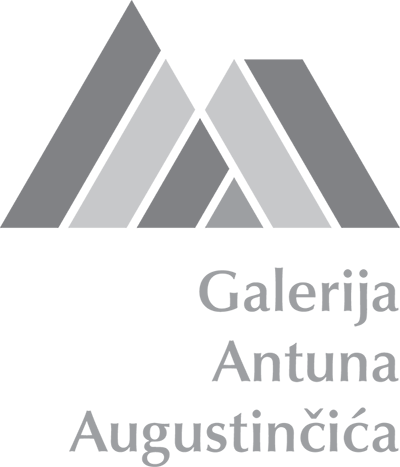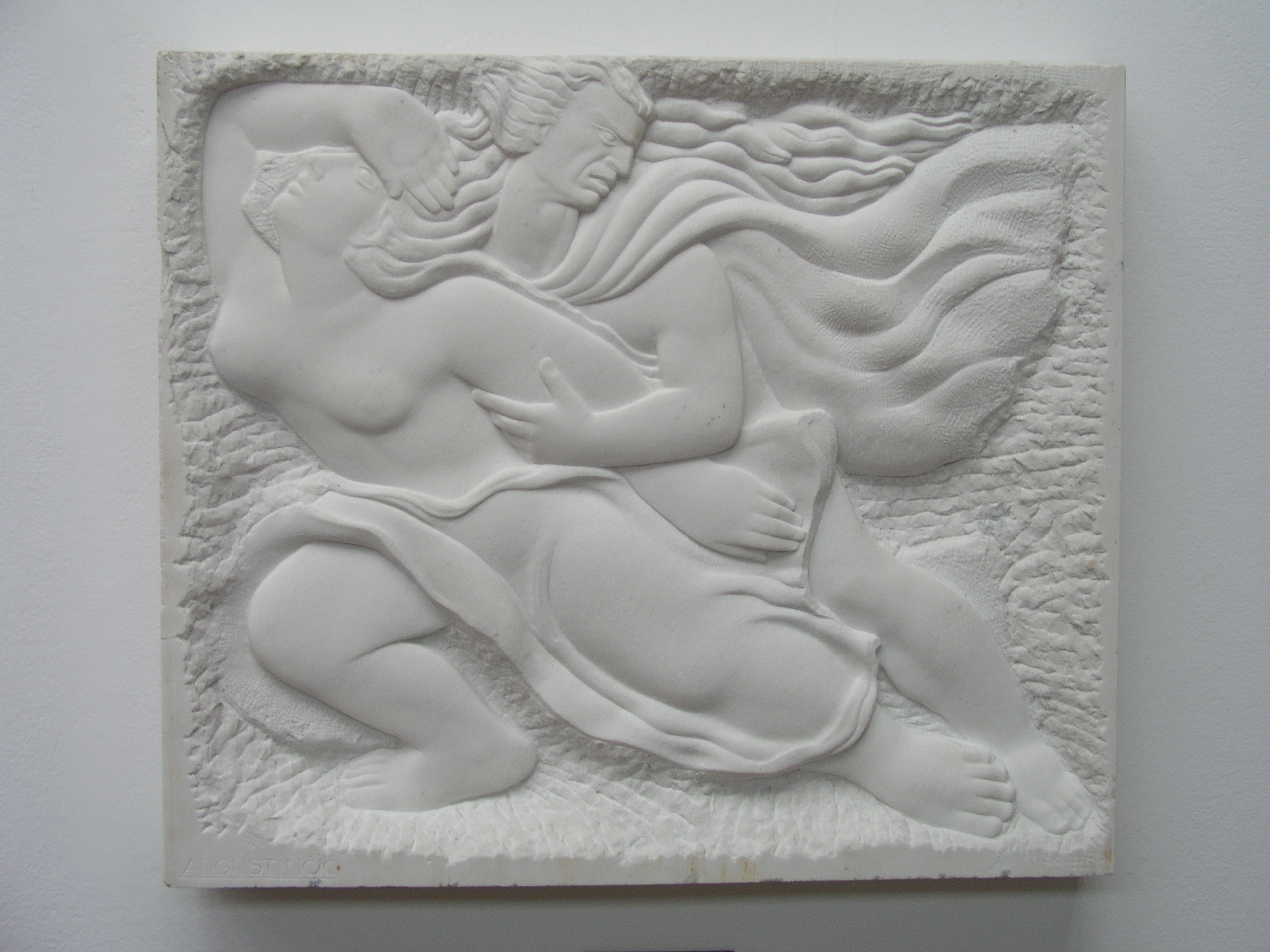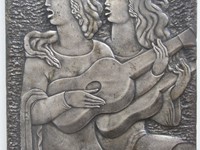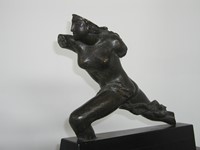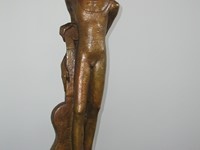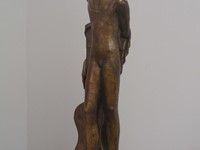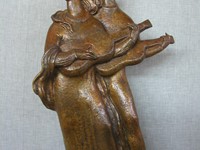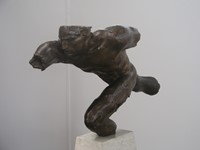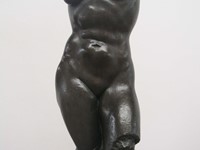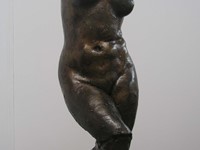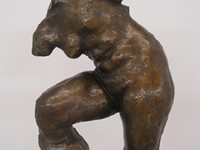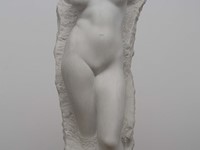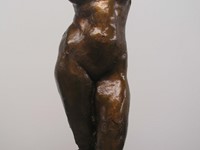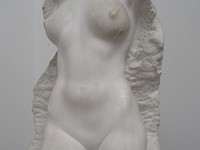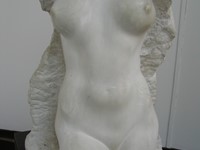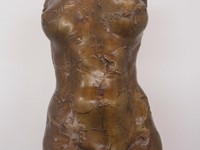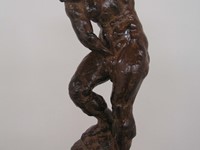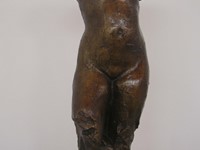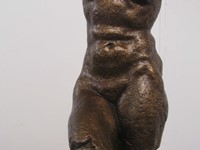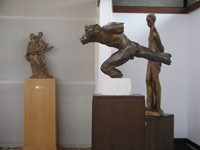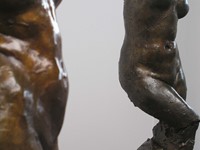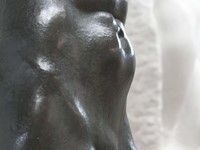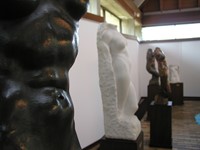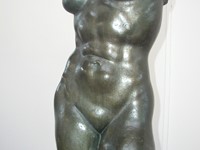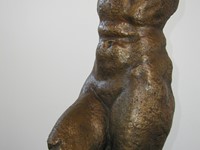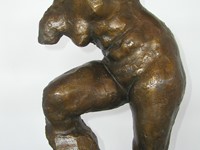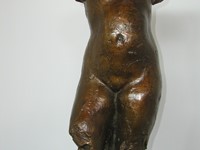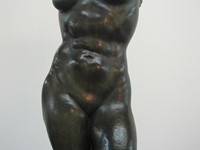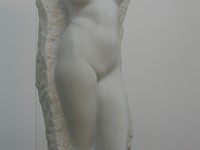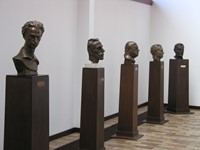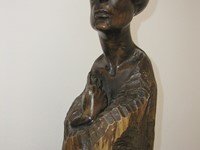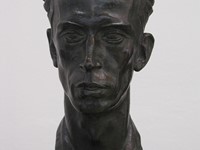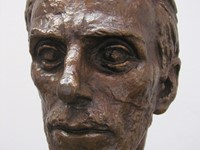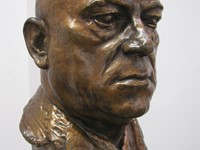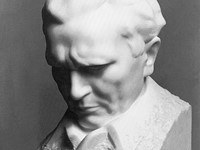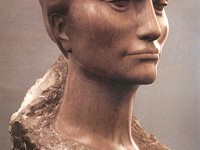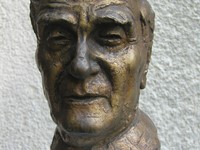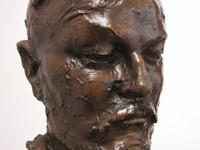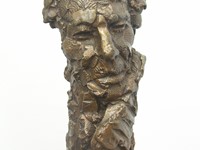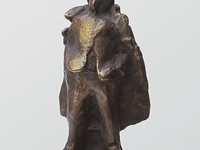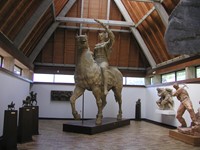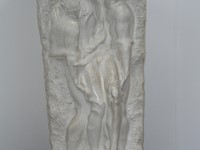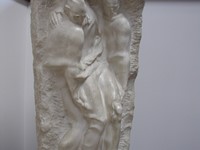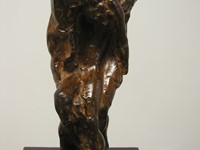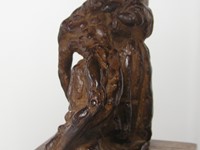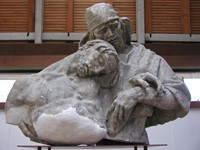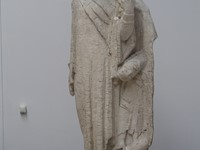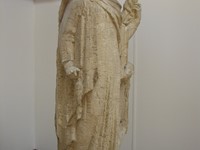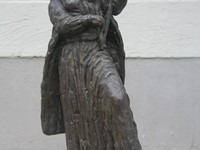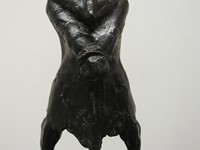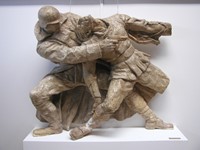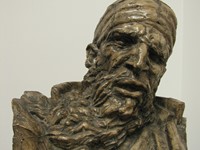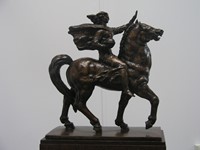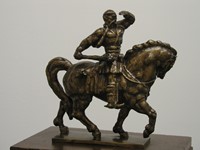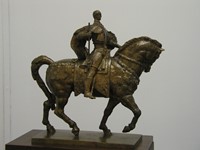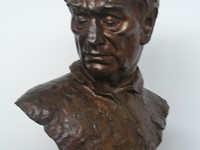Portrait of Antun Augustinčić displayed in the entrance foyer is a work of Ivan Sabolić (1921–1986), who was Augustinčić’s student, a long-time collaborator, and his successor as leader of his Master Workshop.
ROOM I (torsos)
Two reliefs, Abduction and Melody lead us to the torsos in Room I. Female Torso from 1926, the Harlequin, and A Young Girl and a Young Man with Guitars speak of Augustinčić’s formation period at the Zagreb academy and of his studies in Paris at the time dominated by art deco. He soon developed his own expression in sculpture in which the study of movement held an important place (Male Torso, 1927; Male Torso, around 1957) underlined by his excellent knowledge of anatomy. A series of torsos from the 1940s and 1950s looms against his monumental sculptures: in the intimacy of his studio he varied the motive of female torso exploring it in the classical posture of counterpoise (Torso, 1941; Female Torso, 1950) as well as in motion (Female Torso in Motion). Considering the texture of each material Augustinčić created an array of light effects; smoothing the surface as in the marble Torso or making in dynamic as in Female Torso/Torso III, 1952.
ROOM II (portraits)
Portraits as a theme were continuously present in the opus of Antun Augustinčić. This selection from the long list of portraits gives a testimony of historic figures and of changes in sculptural techniques. It also speaks of the artist’s lasting ability to give a psychological characterization of his models. Expressed with a masterly skill, these portraits are among the best works of Croatian portrait sculpture in the 20th century.
In the portrait of his wife Nada Mikačić (1895–1972), one of his earliest portraits, the accentuated contours and smoothly polished surface add to the strong expressiveness of the face. Stylization can still be detected in the portrait of lawyer and politician Mladen Iveković (1903–1970), but the portrait of revolutionary Zlatko [najder (1903–1931) reflects the presence of realism which was to become the dominant feature of the anthological portrait of journalist and essayist Lujo Novak (1883–1945).
The portrait of Josip Broz Tito (1892–1980) was carved by Dušan Džamonja after Augustinčić’s model. Delicately cut details give an illusion of softness to the marble head. Carved in red granite from Kotor the portrait of Tito’s wife Jovanka Broz (1924–) resembles Egyptian portraits with the smooth surface of its peaceful and solemn face features. Augustinčić made a portrait of Piotr Leonidovich Kapitza (1894–1984), one of the most famous Russian physicists of the 20th century, on the occasion of Kapitza’s visit to Zagreb. The portrait of theatre director and film maker Bojan Stupica (1910–1970) shows a »fluid« impressionist modelling, as opposed to the expressionist bust of theatrologist, director and educator Branko Gavella (1885–1962). Despite its small size the half-length of Miroslav Krleža (1893–1981) seems monumental. It is considered to be one of the most original and most acclaimed portraits of this literary giant.
ROOM III (monuments)
Monuments are the part of Augustinčić’s opus which brought him the greatest fame among the broad audience. Here they are represented by a selection of models and sketches. Peace was placed in the UN building park in New York as a gift of the former Yugoslavia to the United Nations. The Miner was made for the International Labour Office in Geneva. Carrying the Wounded was carved in Carrara marble for the Viktorovac common grave in Sisak. As a kind of parallel to the motif of the Deposition from the Cross Augustinčić varied this motif for thirty years through a number of sketches and monuments. Pietà/Silesian Mother is a part of the large ensemble for the Monument to Josef Pilsudski and the Silesian Uprising in Katowice. It was never completed, only the bronze equestrian statue of Marshal Pilsudski was raised in 1991 which, until then, had been kept in the Gallery. The Spinner is a corner figure of the Monument to the Victims of Fascism in Addis Ababa, jointly sculpted by Antun Augustinčić and Frano Kršinić. Augustinčić often used the spinner motif for tombstones. One of the variants is the Spinner in summer folk costume of the Dinara region.
Death in Villefranche is a sketch for an unexecuted monument to Croatian victims: soldiers who were the first to raise arms against the Nazi regime in occupied France on September 17, 1943 in Villefranche-de-Rouerge.
Two Fighters and the Head of a Turk are fragments of the Monument to the Fallen Citizens of Niš in Niš, while the Battle is a relief from the base of the Monument to King Alexander in Sombor which was removed and recast soon after it had been erected, at the outbreak of World War I.
The visit to Room III comes to a close with three sketches of equestrian statues: for Peace, for the unexecuted Monument to Prince Marko, and for the Monument to Ras Makonnen in Harar. The monument to the Ethiopian military commander (1852–1906) was ordered by his son, Ethiopian emperor Haile Selassie.
(D. V.)

